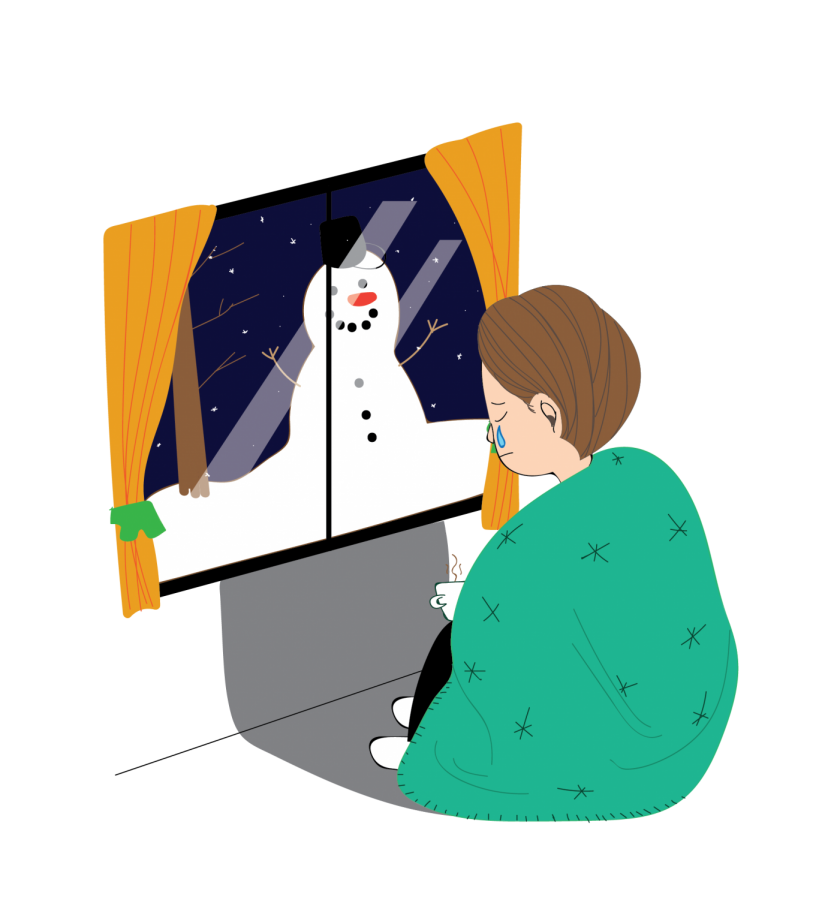January blues: what is it, how to combat it
January 17, 2019
Though winter brings Christmas cheer and time off of school, it can also bring Seasonal Attribution Disorder (SAD) or more popularly known as seasonal depression.
SAD is caused by the changing of the seasons like late fall and winter.
With less sunlight and cooler temperatures, the Mayo Clinic said the body’s levels of serotonin can decrease and cause feelings of depression.
Especially during the holidays many people are rushing to buy last minute gifts which can put a strain on their finances and increase stress. This can also lead to SAD in some cases.
It is important to know the symptoms in order to help identify and prevent them from occurring.
“The most common symptoms of seasonal depression, moodiness and fatigue, start in the fall and persist throughout the winter months.” Darci Nichols, assistant director of Counseling Services said, “If you are sleeping through your alarm and missing your first class in the morning or gaining weight because you have intense cravings for foods high in carbs, you should schedule an assessment with one of our counselors.”
These aren’t the only symptoms for SAD. Some other symptoms include low energy, problem sleeping and sluggish feelings. There are ways to tackle these symptoms and help with the January blues.
Yoga or Exercise
Taking 10 minutes out of the day to relax and take a breathe relieves stress or negative feelings.
Kaylee Johnson, a sophomore math major said: “With depression or even helping to prevent depression, exercising is very important. It gets you up from the couch or from your chair at work and gets your blood flowing.”
Breaking a sweat or getting any exercise in general is good for the body and can help offset any feelings of depression with the release of endorphins into the brain that affect your mood. Just by keeping active will help prevent any negative feelings that might occur.
Taking Vitamins
Taking Vitamin D helps increase the energy in the body and with mood swings. It also aids in strengthening bones and the immune system in general which, in turn, can prevent sickness from coming on. Vitamin D does take a little while to set in, approximately three months, in order for someone to see noticeable results in their health and mood. There is no harm in starting early though, who knows how much it could help your health later on.
Socializing
Whether this is going out for a coffee date to catch up with an old friend or going out with a huge group of people, staying in a social environment can help aid mood.
Along with the bustle and energy that holidays bring, the absence of close friends and family can make the time after these days of celebration seem somber and dark.
“Seasonal depression is very real and effects more students than one would think. I think that finding a balance of surrounding yourself with good people really helps a lot too.” Sophomore English education major, Anne Duran said. “Campus has a lot of great options for helping kick seasonal depression as well, such as the Wellness Center for both working out and Counseling Services.”
Light Treatment
Nichols also said light therapy with a light machine is effective in managing the symptoms of SAD. Light therapy tricks your body into believing it’s getting more sun, which can make serotonin levels in the body rise and has the potential to boost anyone’s mood.
Set Goals
Setting goals helps to keep your spirits and motivation up, especially going into the New Year. New Year’s resolutions are a good way to begin this positive outlook. Many people set them in order to better their health, relationships, career and personal growth. By having a goal in mind and being able to plan ahead and therefore look forward to what is to come in the future, it can be a good way to stay positive throughout this spring semester.






















